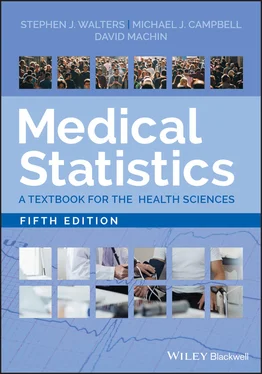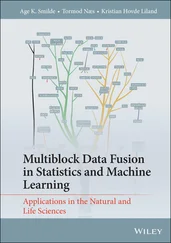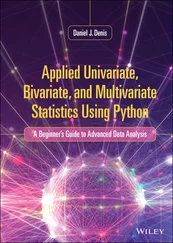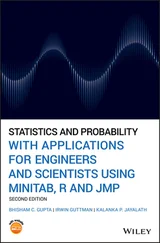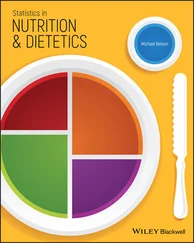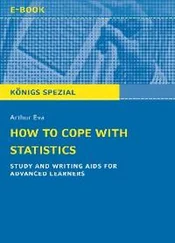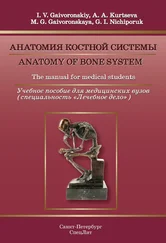1 Cover
2 Title Page Medical Statistics A Textbook for the Health Sciences Fifth Edition Stephen J. Walters Medical Statistics GroupSchool of Health and Related ResearchUniversity of SheffieldSheffield, UK Michael J. Campbell Medical Statistics GroupSchool of Health and Related ResearchUniversity of SheffieldSheffield, UK David Machin Medical Statistics GroupSchool of Health and Related ResearchUniversity of SheffieldLeicester Cancer Research CentreUniversity of LeicesterLeicester, UK
3 Copyright Page
4 Preface
5 1 Uses and Abuses of Medical Statistics Summary 1.1 Introduction 1.2 Why Use Statistics? 1.3 Statistics is About Common Sense and Good Design 1.4 How a Statistician Can Help
6 2 Displaying and Summarising Data Summary 2.1 Types of Data 2.2 Summarising Categorical Data 2.3 Displaying Categorical Data 2.4 Summarising Continuous Data 2.5 Displaying Continuous Data 2.6 Within‐Subject Variability 2.7 Presentation 2.8 Points When Reading the Literature 2.9 Technical Details 2.10 Exercises
7 3 Summary Measures for Binary Data Summary 3.1 Summarising Binary and Categorical Data 3.2 Points When Reading the Literature 3.3 Exercises
8 4 Probability and Distributions Summary 4.1 Types of Probability 4.2 The Binomial Distribution 4.3 The Poisson Distribution 4.4 Probability for Continuous Outcomes 4.5 The Normal Distribution 4.6 Reference Ranges 4.7 Other Distributions 4.8 Points When Reading the Literature 4.9 Technical Section 4.10 Exercises
9 5 Populations, Samples, Standard Errors and Confidence Intervals Summary 5.1 Populations 5.2 Samples 5.3 The Standard Error 5.4 The Central Limit Theorem 5.5 Standard Errors for Proportions and Rates 5.6 Standard Error of Differences 5.7 Confidence Intervals for an Estimate 5.8 Confidence Intervals for Differences 5.9 Points When Reading the Literature 5.10 Technical Details 5.11 Exercises
10 6 Hypothesis Testing, P ‐values and Statistical Inference Summary 6.1 Introduction 6.2 The Null Hypothesis 6.3 The Main Steps in Hypothesis Testing 6.4 Using Your P ‐value to Make a Decision About Whether to Reject, or Not Reject, Your Null Hypothesis 6.5 Statistical Power 6.6 One‐sided and Two‐sided Tests 6.7 Confidence Intervals (CIs) 6.8 Large Sample Tests for Two Independent Means or Proportions 6.9 Issues with P ‐values 6.10 Points When Reading the Literature 6.11 Exercises
11 7 Comparing Two or More Groups with Continuous Data Summary 7.1 Introduction 7.2 Comparison of Two Groups of Paired Observations – Continuous Outcomes 7.3 Comparison of Two Independent Groups – Continuous Outcomes 7.4 Comparing More than Two Groups 7.5 Non‐Normal Distributions 7.6 Degrees of Freedom 7.7 Points When Reading the Literature 7.8 Technical Details 7.9 Exercises
12 8 Comparing Groups of Binary and Categorical Data Summary 8.1 Introduction 8.2 Comparison of Two Independent Groups – Binary Outcomes 8.3 Comparing Risks 8.4 Comparison of Two Groups of Paired Observations – Categorical Outcomes 8.5 Degrees of Freedom 8.6 Points When Reading the Literature 8.7 Technical Details 8.8 Exercises
13 9 Correlation and Linear Regression Summary 9.1 Introduction 9.2 Correlation 9.3 Linear Regression 9.4 Comparison of Assumptions Between Correlation and Regression 9.5 Multiple Regression 9.6 Correlation is not Causation 9.7 Points When Reading the Literature 9.8 Technical Details 9.9 Exercises
14 10 Logistic Regression Summary 10.1 Introduction 10.2 Binary Outcome Variable 10.3 The Multiple Logistic Regression Equation 10.4 Conditional Logistic Regression 10.5 Reporting the Results of a Logistic Regression 10.6 Additional Points When Reading the Literature When Logistic Regression Has Been Used 10.7 Technical Details 10.8 The Wald Test 10.9 Evaluating the Model and its Fit: The Hosmer–Lemeshow Test 10.10 Assessing Predictive Efficiency (1): 2 × 2 Classification Table 10.11 Assessing Predictive Efficiency (2): The ROC Curve 10.12 Investigating Linearity 10.13 Exercises
15 11 Survival Analysis Summary 11.1 Time to Event Data 11.2 Kaplan–Meier Survival Curve 11.3 The Logrank Test 11.4 The Hazard Ratio 11.5 Modelling Time to Event Data 11.6 Points When Reading Literature 11.7 Exercises
16 12 Reliability and Method Comparison Studies Summary 12.1 Introduction 12.2 Repeatability 12.3 Agreement 12.4 Validity 12.5 Method Comparison Studies 12.6 Points When Reading the Literature 12.7 Technical Details 12.8 Exercises
17 13 Evaluation of Diagnostic Tests Summary 13.1 Introduction 13.2 Diagnostic Tests 13.3 Prevalence, Overall Accuracy, Sensitivity, and Specificity 13.4 Positive and Negative Predictive Values 13.5 The Effect of Prevalence 13.6 Confidence Intervals 13.7 Functions of a Screening and Diagnostic Test 13.8 Likelihood Ratio, Pre‐test Odds and Post‐test Odds 13.9 Receiver Operating Characteristic (ROC) Curve 13.10 Points When Reading the Literature About a Diagnostic Test 13.11 Exercises
18 14 Observational Studies Summary 14.1 Introduction 14.2 Risk and Rates 14.3 Taking a Random Sample 14.4 Questionnaire and Form Design 14.5 Cross‐sectional Surveys 14.6 Non‐randomised Studies 14.7 Cohort Studies 14.8 Case–Control Studies 14.9 Association and Causality 14.10 Modern Causality Methods and Big Data 14.11 Points When Reading the Literature 14.12 Technical Details 14.13 Exercises
19 15 The Randomised Controlled Trial Summary 15.1 Introduction 15.2 The Protocol 15.3 Why Randomise? 15.4 Methods of Randomisation 15.5 Design Features 15.6 Design Options 15.7 Meta‐analysis 15.8 Checklists for Design, Analysis and Reporting 15.9 CONSORT 15.10 Points When Reading the Literature About a Trial 15.11 Exercises
20 16 Sample Size Issues Summary 16.1 Introduction 16.2 Study Size 16.3 Continuous Data 16.4 Binary Data 16.5 Prevalence 16.6 Subject Withdrawals 16.7 Other Aspects of Sample Size Calculations 16.8 Points When Reading the Literature 16.9 Technical Details 16.10 Exercises
21 17 Other Statistical Methods Summary 17.1 Analysing Serial or Longitudinal Data 17.2 Poisson Regression 17.3 Missing Data 17.4 Bootstrap Methods 17.5 Points When Reading the Literature 17.6 Exercises
22 18 Meta‐analysis Summary 18.1 Introduction 18.2 What is a Meta‐analysis? 18.3 Meta‐analysis Methods 18.4 Example: Mobile Phone Based Intervention for Smoking Cessation 18.5 Discussion 18.6 Technical Details 18.7 Exercises
23 19 Common Mistakes and Pitfalls Summary 19.1 Introduction 19.2 Misleading Graphs and Tables 19.3 Plotting Change Against Initial Value 19.4 Within Group Versus Between Group Analyses 19.5 Analysing Paired Data Ignoring the Matching 19.6 Unit of Analysis 19.7 Testing for Baseline Imbalances in an RCT 19.8 Repeated Measures 19.9 Clinical and Statistical Significance 19.10 Post Hoc Power Calculations 19.11 Predicting or Extrapolating Beyond the Observed Range of Data 19.12 Exploratory Data Analysis 19.13 Misuse of P ‐values 19.14 Points When Reading the Literature
24 Appendix Statistical Tables
25 Solutions to Multiple‐Choice ExercisesChapter 2 Chapter 3 Chapter 4 Chapter 5 Chapter 6 Chapter 7 Chapter 8 Chapter 9 Chapter 10 Chapter 11 Chapter 12 Chapter 13 Chapter 14 Chapter 15 Chapter 16 Chapter 17 Chapter 18
26 References (Chapter numbers in square brackets)
27 Index
28 End User License Agreement
1 Chapter 2 Table 2.1 Baseline characteristics of participants in a randomised control tr... Table 2.2 Treatment centre for 202 patients with corns who were recruited to ... Table 2.3 Cross‐tabulation of treatment centre by randomised group for 202 pa... Table 2.4 The 16 corn sizes ordered and ranked from smallest to largest. Table 2.5 Calculating the median, quartiles, and interquartile range for the ... Table 2.6 Calculation of the variance and standard deviation for 16 subjects ... Table 2.7 Frequency distribution the size of the corn, in mm, at baseline for...
Читать дальше
